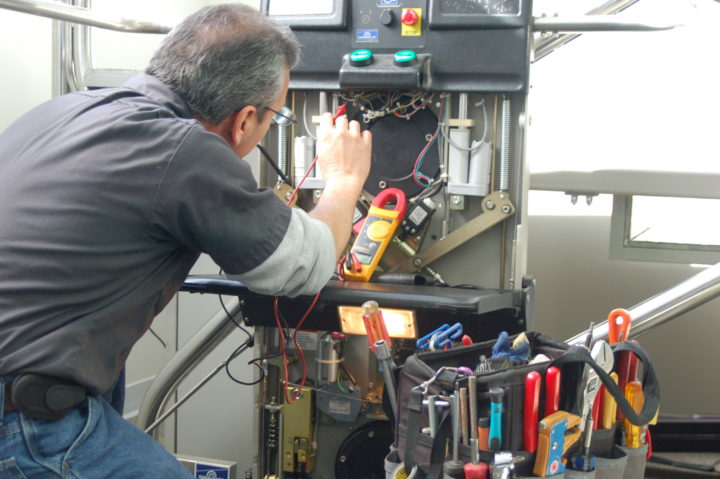System Lift Capacities Explained: Why They Matter for Lift Servicing
System Lift Capacities Explained: Why They Matter for Lift Servicing
Blog Article
A Thorough Approach to Enhancing Efficiency Through Strategic Lift Fixing Methods
A systematic and critical technique to raise repair work and upkeep is vital to make the most of efficiency and reduce downtime. By resolving usual lift problems, carrying out proactive maintenance steps, and establishing targeted repair service plans, facilities can optimize their lift systems to operate at peak performance degrees.
Value of Lift Efficiency Optimization
Comprehending the importance of enhancing lift performance is crucial for making sure reliable and trustworthy vertical transport systems in different structures and frameworks. Lifts are essential elements of modern infrastructure, providing vertical flexibility for owners and products within structures of varying heights. By enhancing lift efficiency, structure proprietors and center managers can boost user experience, boost power effectiveness, and boost general operational efficiency.
Reliable lift efficiency optimization entails numerous factors, consisting of rate, capacity, power safety, intake, and upkeep needs. Properly optimized lifts can lower wait times for customers, specifically in high-traffic buildings, resulting in boosted fulfillment and productivity. Furthermore, maximized lifts add to energy cost savings by using innovative control systems and technologies that decrease power intake without jeopardizing performance.

Identifying Common Lift Issues
Recognizing typical lift concerns is important for maintaining the operational efficiency and safety of upright transportation systems in buildings. This problem can be a sign of troubles with the lift's motor, control system, or even the alignment of the lift cars and truck.
An additional prevalent lift concern is unusual sounds emanating from the lift shaft or machinery room. These sounds can vary from grinding or scraping sounds to loud clunking noises, all of which might signify underlying mechanical concerns that call for immediate interest. Furthermore, regular door malfunctions, such as doors not opening up or closing effectively, can interfere with the smooth flow of passengers and position security dangers.
Applying Aggressive Upkeep Steps
To maximize the efficiency and durability of lift systems, proactive upkeep steps play a crucial function in guaranteeing functional integrity and safety and security. lift breakdown. Applying proactive maintenance entails methodically checking, maintenance, and fixing parts prior to they fall short, thus protecting against expensive downtime and prospective security threats. On a regular basis scheduled examinations can help identify small issues prior to they rise into significant troubles, inevitably prolonging the life expectancy of lift systems
One trick element of positive maintenance is developing an in-depth maintenance routine based on manufacturer suggestions and sector best techniques. This schedule must describe jobs such as see page lubrication, positioning checks, and element substitutes at specified intervals. Additionally, implementing problem tracking methods, such as vibration evaluation and thermal imaging, can help spot very early indications of wear or breakdown.
Moreover, training upkeep staff on proper evaluation methods and precautionary upkeep procedures is vital for the successful execution of positive maintenance measures. By cultivating a culture of aggressive maintenance within a company, lift systems can run at peak performance degrees, lessening disturbances and guaranteeing the security of users.
Developing Targeted Repair Work Plans
Upon assessing the upkeep documents and performance data, the engineering team can establish targeted repair strategies to deal with certain issues and optimize lift system performance. These repair work plans are customized to the determined problems, making certain that sources are concentrated on dealing with important issues effectively. By prioritizing repair work based upon their effect on efficiency and safety and security, the targeted repair plans aid lessen downtime and maintenance costs while making the most of the lift system's integrity.
Developing these plans entails an extensive analysis of the lift system components, consisting of motors, cords, brakes, and control systems. Through this detailed analysis, the design team can determine the source click now of any kind of breakdowns or degradation in efficiency. This information is then made use of to develop a roadmap for the fixing process, outlining the required steps, timeline, and resources needed to address each concern successfully.
Furthermore, targeted fixing plans might consist of preventative measures to enhance the lift system's long life and performance. By proactively dealing with potential concerns prior to they intensify, these plans contribute to the overall efficiency and security of the lift system.
Utilizing Data-Driven Insights
Utilizing the power of data-driven understandings is essential in optimizing lift system performance and Visit Website maintenance effectiveness. These anticipating upkeep techniques aid protect against unexpected failures, decrease downtime, and prolong the life-span of lift systems.

Verdict
To conclude, maximizing lift performance is important for making certain effectiveness and security in buildings. By determining common lift issues, executing proactive upkeep steps, developing targeted fixing plans, and making use of data-driven understandings, organizations can improve performance and decrease downtime. It is very important to take a thorough technique to raise repair service strategies to optimize functional efficiency and ensure the longevity of lift systems.
By attending to typical lift problems, applying aggressive upkeep measures, and creating targeted repair work strategies, centers can maximize their lift systems to operate at peak efficiency degrees.An additional widespread lift concern is weird sounds rising from the lift shaft or equipment area.Upon analyzing the upkeep documents and efficiency data, the engineering team can create targeted repair service strategies to resolve specific concerns and optimize lift system performance. By focusing on repair work based on their impact on performance and safety and security, the targeted fixing plans aid reduce downtime and maintenance expenses while optimizing the lift system's integrity.
It is important to take a thorough approach to lift repair methods to make the most of functional efficiency and make sure the longevity of lift systems.
Report this page